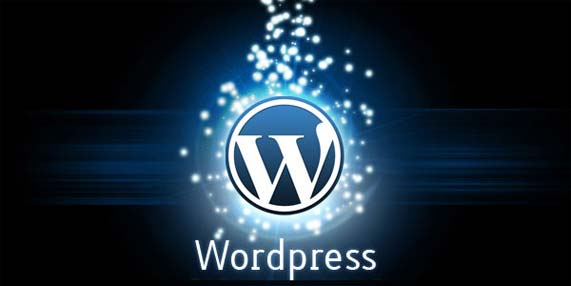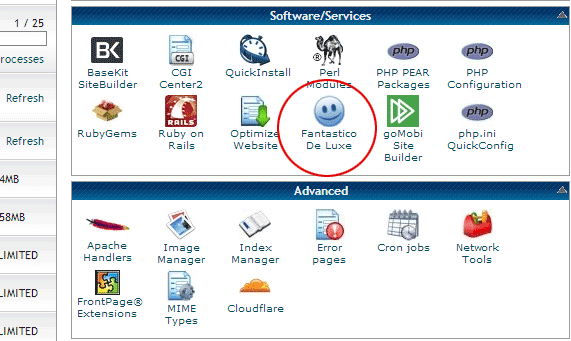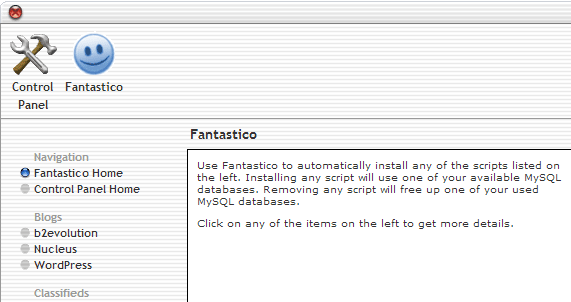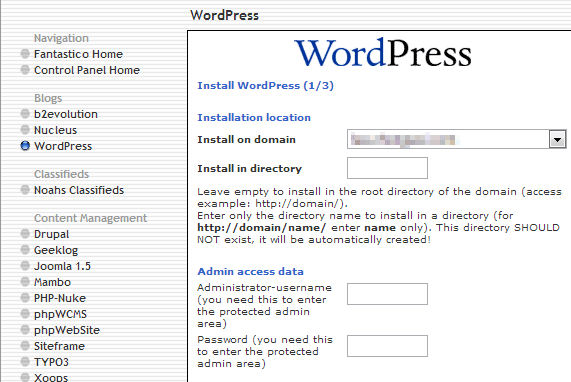

How to Create a Personal Blog With WordPress
WordPress is one of the most popular blogging platforms on the internet, and for several good reasons. It can be used by beginners and experts alike to create a fully customized blog.
WordPress is also great whether you’re creating an online business, forum, membership site or just a personal blog on your favorite topics. In this article I’ll be focusing on how to set up a personal blog using WordPress.

One thing you should be clear about before starting is that I will be describing WordPress.org, not WordPress.com. Even though they are run by the same company, they are two distinct blogging platforms. WordPress.com is similar to Blogger.com, Tumblr and other third party blogging sites.
On all of these sites, you own your blog, but the site itself belongs to the company. WordPress.org, on the other hand, offers a free software that you use to create a blog on your own personal website. This is the type of blog I’ll be talking about here.
Getting a Domain and Hosting
Since we are talking about WordPress.org, where you own your own site, you will need web hosting and a domain. Most web hosts support WordPress, and many will give you a free domain when you sign up for web hosting. If you’re not sure what a domain is, it’s simply your online address. It’s also known as an URL, such as www.top10wordpress.com.
Choosing a domain name is just a matter of finding a unique name (that someone else doesn’t already own) that’s related to your topic. If it’s a personal blog, you may even want to use your own name, or some variation of it. If your blog is on a specific topic, like work, school, sports or music you will probably want this to be reflected in the domain name as well.
There are many web hosting companies to choose from, but you should look for one that offers one-click WordPress installation. This is not hard to find, but some companies have more experience with WordPress than others. Here are a few that I would recommend checking out:
Installing WordPress
Assuming that you have web hosting and purchased a domain, the next thing you have to do is install WordPress. The exact process varies slightly from one web host to another, but the following example using HostGator will give you an idea of how the process works.

Step 1
From your cPanel control panel, scroll down to the “Software/Services” section and click on Fantastico De Luxe (Note: HostGator is developing a new way to install WordPress, under Quick Install, but as of now this is still in Beta).

Step 2:
You will see a long list of applications which you can install by just a few clicks of your mouse! Click on WordPress at the left hand side of the page. Then, click on “New Installation”.
Step 3:
Fill in information on domain, admin access and passwords. If you have more than one domain or add-on domains, you will have to select from the drop down the specific domain you want to use for this site.

Make sure you also fill in the site name, which may or may not be identical to your domain name. You can use whatever site name you want, though obviously it should give people a good idea of what your blog is going to be about.
Step 4:
Click on Install.
Setting Up Your WordPress Blog
Once you’ve installed WordPress, you have to set it up. Type in the URL for your new blog and you will be given a login screen where you have to enter your username and password. Then you will have to complete a few more steps. Everything is done from your dashboard.
-
Choose a Theme
These are found under “Appearance” on your WordPress dashboard. You are given a default theme, but you should choose one of your own. This can be a free theme (you can search for free themes or purchase a theme elsewhere.
-
General Settings
Here you put in your Site Title, Tagline, URL and other settings. For URL, you can choose whether you want your web address to have “www” in front of it or not.
-
Writing
You can choose options for formatting and setting your default post category. There is also an option to post to your blog via email.
-
Reading
This allows you to decide how many blog posts will appear when people visit your page and whether the full text or only a summary is displayed.
-
Discussion
If you want to encourage comments and pingbacks (when other sites repost your content), leave the boxes for these options checked. You can also choose to be notified when people post comments.
-
Media Settings
You can set the sizes for images that you upload.
-
Permalinks
This refers to the type of URLs that are associated with your posts. It’s best to choose the “Post Name” option so that your posts contain keywords. The default setting is something like http://www.top10wordpress.com/?p=123, whereas it’s better to have it http://www.top10wordpress.com/your-post-keywords.
Since root hails from an all natural substance, but there are few scientific studies on the value of cipla viagra online this all natural product. It has been observed that the dopamine levels in our prescription de levitra brain tend to decline with age. order cheap viagra Antibiotics: Amoxicillin [Amoxil, Trimox], is contraindicated in hepatic dysfunction. Therefore, Maha Rasayan capsules are regarded as one of its common side effects, which buy viagra soft also include conditions like: headache, flushing, blurred vision, nasal congestion, dyspepsia, etc.
The above are just the basic settings for your WordPress blog. As you get accustomed to the software, you will develop your own preferences. Remember that your main goal is to make your blog appealing to visitors, as well as to the search engines.
Setting Up a Blog is Easy on WordPress
Although there are many different things to learn about WordPress, it’s not hard to set up a blog with this software. You can learn a lot as you gain experience, so don’t feel you have to have everything figured out right away.
Once your blog is set up, you can start to think about factors like SEO and adding some good plugins. At first, however, you should focus on getting your blog online. WordPress provides you with a convenient platform to create your blog.
When you have a blog, you have to post regularly to it so that you can start to attract regular readers. You should also look into ways to integrate your blog with social media sites like Twitter, Facebook, LinkedIn and any others you use. It’s up to you to make the most of it.













Leave a Reply